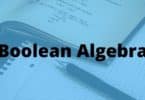Euclid Geometry Questions and Answers:
Ques. The three steps from solids to points are :
(a) Solids – surfaces – lines – points
(b) Solids – lines – surfaces – points
(c) Lines – points – surfaces – solids
(d) Lines – surfaces – points – solids
Ques. Euclid divided his famous treatise “The Elements” into :
(a) 13 chapters
(b) 12 chapters
(c) 11 chapters
(d) 9 chapters
Ques. Euclid’s second axiom is
(a) The things which are equal to the same thing are equal to one another.
(b) If equals are added to equals, the whole is equal.
(c) If equals are subtracted from equals, the remainders are equals.
(d) Things which coincide with one another are equal to one another.
Ques. Boundaries of solids are :
(a) surfaces
(b) curves
(c) lines
(d) points
Related: mensuration problems (maths)
Ques. The side faces of a pyramid are :
(a) Triangles
(b) Squares
(c) Polygons
(d) Trapeziums
Ques. The Greeks emphasized :
(a) Inductive reasoning
(b) Deductive reasoning
(c) Both A and B
(d) Practical use of geometry
Ques. Which of the following needs proof ?
(a) Theorem
(b) Axiom
(c) Definition
(d) Postulate
Ques. Euclid’s fifth postulate is
(a) The whole is greater than the part.
(b) A circle may be described with any centre and any radius.
(c) All right angles are equal to one another.
(d) If a straight line falling on two straight lines makes the interior angles on the same side of it taken together less than two right angles, then the two straight lines if produced indefinitely, meet on that side on which the sum of angles is less than two right angles.
Related: questions and answers of probability
Ques. In religious practice, the shapes of altars used are :
(a) Squares and circles
(b) Triangles and rectangles
(c) Trapeziums and pyramids
(d) Rectangles and squares
Ques. Euclid belongs to the country :
(a) Babylonia
(b) Egypt
(c) Greece
(d) India
Ques. Pythagoras was a student of :
(a) Thales
(b) Euclid
(c) Both A and B
(d) Archimedes
Ques. “Lines are parallel if they do not intersect” is stated in the form of
(a) an axiom
(b) a definition
(c) a postulate
(d) a proof
Related: questions on percentage
Ques. The number of dimensions of a surface is :
(a) 1
(b) 2
(c) 3
(d) 0
Ques. In the Indus Valley Civilisation (about 300 B.C.), the bricks used for construction work had dimensions in the ratio
(a) 1 : 3 : 4
(b) 4 : 2 : 1
(c) 4 : 4 : 1
(d) 4 : 3 : 2
Ques. The number of interwoven isosceles triangles in Sriyantra (in the Atharvaveda) is:
(a) Seven
(b) Eight
(c) Nine
(d) Eleven
Ques. Johnny is of the same age as Megan. Raul is also of the same age as Megan. State Euclid‟s axiom that illustrates the relative ages of John and Raul.
(a) First Axiom
(b) Second Axiom
(c) Third Axiom
(d) Fourth Axiom
Related: questions on permutation and combination
Ques. The number of dimensions, a solid has :
(a) 1
(b) 2
(c) 3
(d) 0
Ques. Boundaries of surfaces are :
(a) surfaces
(b) curves
(c) lines
(d) points
Ques. In Ancient India, altars with combinations of shapes like rectangles, triangles and trapeziums were used for :
(a) Public worship
(b) Household rituals
(c) Both A and B
(d) None of A, B, C
Ques. Euclid stated that all right angles are equal to each other in the form of
(a) an axiom
(b) a definition
(c) a postulate
(d) a proof
Related: complex numbers questions
Ques. The total number of propositions in the Elements are :
(a) 465
(b) 460
(c) 13
(d) 55
Ques. Thales belongs to the country :
(a) Babylonia
(b) Egypt
(c) Greece
(d) Rome
Ques. A pyramid is a solid figure, the base of which is
(a) only a triangle
(b) only a square
(c) only a rectangle
(d) any polygon
Ques. The number of dimensions, a point has :
(a) 0
(b) 1
(c) 2
(d) 3
Related: questions on Maths logic
Ques. It is known that if x + y = 10 then x + y + z = 10 + z. The Euclid‟s axiom that illustrates this statement is :
(a) First Axiom
(b) Second Axiom
(c) Third Axiom
(d) Fourth Axiom






